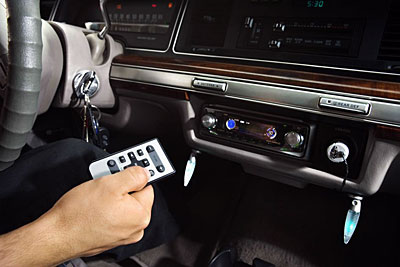Bluetooth Streaming Stereo
Feedsee Bluetooth : Bluetooth Streaming Stereo : Listen to wireless music from an MP3 player or mobile phone without missing a call
Bluetooth streaming stereo, also known as Bluetooth audio streaming, is a technology that allows wireless transmission of audio signals from a source device to a receiving device such as headphones, speakers, or car audio systems. It enables users to play audio content from their smartphones, tablets, or computers through Bluetooth-enabled devices without the need for physical connections like cables.
How Bluetooth streaming stero worked back in the day
 In 2006, with the T605 Motorola Automotive Music and Hands-free System, drivers were given seamless solution that offered access to digital music and phone calls directly through a compatible car sound system. Leveraging hands-free, headset, and Bluetooth stereo profiles, the device paired with a compatible Bluetooth-enabled mobile phone and a separate compatible Bluetooth-enabled music source for crystal clear connectivity and entertainment. Users could listen to music that streamed wirelessly from an MP3 player or a mobile phone without the worry of missing a call. The Bluetooth unit paused the music when a call came in and resumed the music when the call ended. The device featured digital signal processing for noise and echo reduction and enhanced technology that helped enable the volume to increase as background noise increased.
In 2006, with the T605 Motorola Automotive Music and Hands-free System, drivers were given seamless solution that offered access to digital music and phone calls directly through a compatible car sound system. Leveraging hands-free, headset, and Bluetooth stereo profiles, the device paired with a compatible Bluetooth-enabled mobile phone and a separate compatible Bluetooth-enabled music source for crystal clear connectivity and entertainment. Users could listen to music that streamed wirelessly from an MP3 player or a mobile phone without the worry of missing a call. The Bluetooth unit paused the music when a call came in and resumed the music when the call ended. The device featured digital signal processing for noise and echo reduction and enhanced technology that helped enable the volume to increase as background noise increased.
How Bluetooth streaming stereo works today
- Bluetooth Pairing: The source device (e.g., smartphone) and the receiving device (e.g., Bluetooth headphones) establish a pairing connection. This process involves putting both devices in discovery mode and selecting the appropriate device from a list of available Bluetooth devices on the source device.
- Bluetooth Profiles: Bluetooth streaming stereo relies on specific Bluetooth profiles that define the capabilities and functionalities of the devices involved. The most common profile for streaming stereo audio is the Advanced Audio Distribution Profile (A2DP). A2DP allows high-quality stereo audio transmission over Bluetooth.
- Audio Encoding and Compression: Before transmitting audio over Bluetooth, the audio signal is encoded and compressed to reduce its file size and make it suitable for wireless transmission. Common audio codecs used for Bluetooth streaming stereo include SBC (Subband Coding) and more advanced codecs like aptX, AAC, and LDAC. These codecs ensure efficient audio compression and aim to maintain audio quality during transmission.
- Data Transmission: Once the audio signal is encoded and compressed, it is divided into packets and transmitted wirelessly using Bluetooth radio waves. The source device sends these packets to the receiving device using a specific Bluetooth frequency band (2.4 GHz).
- Bluetooth Connection: The source device and the receiving device maintain a stable Bluetooth connection during audio transmission. They negotiate parameters like audio codec support and quality settings to ensure compatibility and optimal audio performance.
- Decoding and Playback: Upon receiving the audio packets, the receiving device decodes and decompresses them using the same audio codec used for encoding. The device then converts the digital audio signal back into an analog signal, which can be amplified and played through speakers or headphones, resulting in the playback of the original audio content.
The quality of Bluetooth streaming stereo can vary depending on several factors such as the audio codec used, the Bluetooth version supported by the devices, the signal strength and distance between the devices, and environmental interference. Advanced codecs like aptX, AAC, and LDAC provide higher audio quality compared to the basic SBC codec but require compatible devices on both ends to achieve optimal performance.